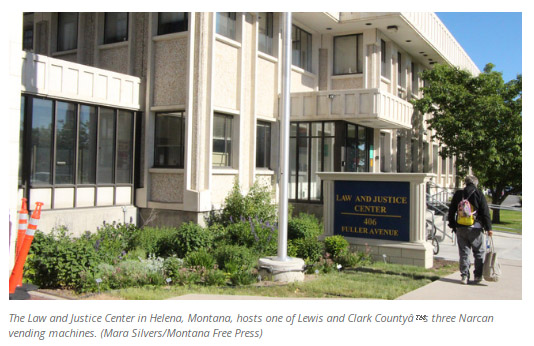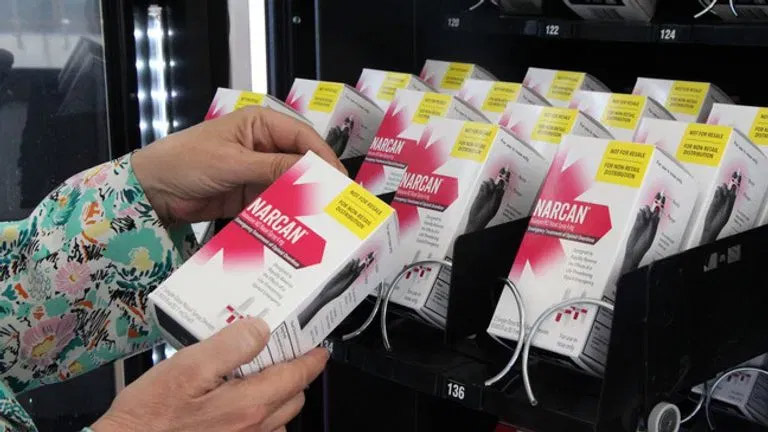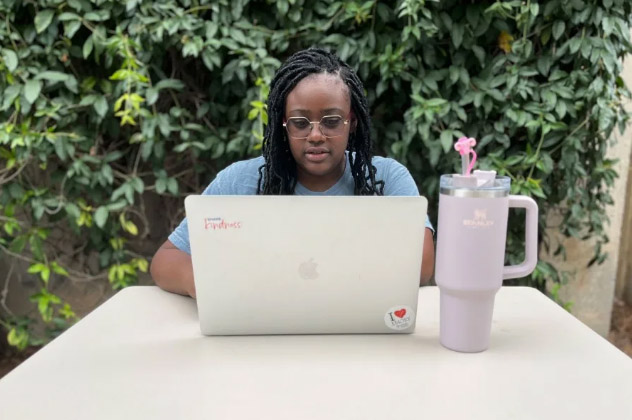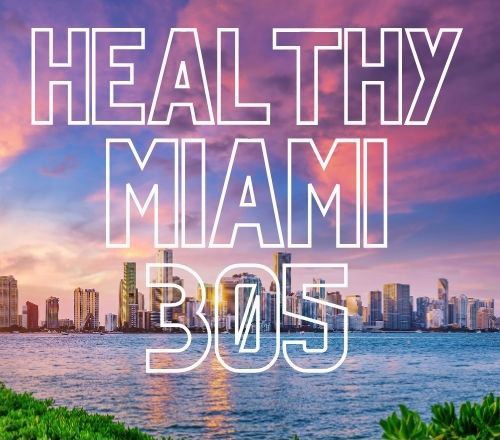
PrEP Can Prevent HIV Infections, But Most Women Don’t Know They Can Take It
August 9, 2024
PrEP, a key HIV prevention tool, isn’t reaching Black women
August 9, 2024HELENA, Mont. — Before she stopped using drugs for good, Cierra Coon estimates that she overdosed eight times in a span of two weeks in the fall of 2022. One of those times, the opioid overdose reversal drug naloxone helped save her life.
She was riding in a car on the back roads of the Flathead Indian Reservation in western Montana when she lost consciousness. Someone in the car grabbed a small bottle of naloxone, sprayed it up her nose, and performed CPR until she came to. Coon said having quick access to the overdose reversal agent, also known by the brand name Narcan, was incredibly lucky.
“The times I wasn’t administered naloxone, it’s a miracle that I made it out,” Coon said. “People brought me back by shocking me with cold water and doing CPR. But that’s not a for-sure ‘I’m going to bring you back to life,’” Coon said.
Nearly two years later, Coon is a recovery coach for a local program, Never Alone Recovery Support Services, and earning a degree as an addiction counselor from Salish Kootenai College. She keeps doses of naloxone in her car in case she needs to help other people.
But, she said, she worries about the drug’s lack of accessibility, particularly in rural areas like her own. The state and tribal health departments’ distribution pipeline has been inconsistent, and the $50 price tag for a two-dose package of naloxone at the nearest Walmart puts it out of reach for many people.
“How are we supposed to afford this drug that’s ultimately to save the lives of ourselves and those around us?” she said.
Montana health officials are considering a new strategy to make naloxone more accessible. Drawing on a pool of behavioral health funds set aside by lawmakers in 2023, health officials within Gov. Greg Gianforte’s administration have proposed installing two dozen naloxone and fentanyl testing strip vending machines around the state at behavioral health drop-in centers and service locations for homeless people.
The $400,000 plan to build, stock, and maintain 24 vending machines for a year has not yet been approved by the governor, a Republican running for a second term, who ultimately decides how the funds allocated to the Behavioral Health System for Future Generations Commission are spent.
Details from the state’s Department of Public Health and Human Services about where the machines would be located and how they would be operated remain scarce.
The opioid-related death rate has tripled in Montana in recent years, from 3.6 deaths per 100,000 residents in 2017 to 11.3 per 100,000 residents in 2023. The death rate is higher among Native Americans: Native people in Montana died of opioid overdoses at a rate of 33 deaths per 100,000 people in 2023 — more than three times the rate for white people.
Naloxone has emerged as an important tool to combat opioid overdoses. When administered quickly, it attaches to receptors in the brain targeted by opioids, blocking the drugs’ effects.
Across the U.S., vending machines that distribute naloxone and other health supplies free of charge are becoming front-line features of the battle against opioid overdoses. Different versions of the model are being tried in at least 33 states.
In a 2023 report, the National Council for Mental Wellbeing described the use of vending machines to distribute naloxone and other “harm reduction” supplies — first-aid kits, pregnancy tests, sterile syringes, and more — as a public health tool that became more widespread during the social distancing era of the covid-19 pandemic. But the popularity of the model has continued to grow since, especially in places with hard-to-reach populations.
“They provide services to [people who use drugs] with far fewer barriers than fixed-site programs and even mobile outreach,” the report stated. Harm-reduction vending machines, it continued, “may also provide greater privacy and anonymity.”

The proposal from the state health department would be the first instance in Montana of vending machines being funded directly by the state, as opposed to the few now funded through public grants or private philanthropy.
Jami Hansen, prevention bureau chief for the state health department’s Behavioral Health and Developmental Disabilities Division, spoke about the proposal during a May meeting of the state behavioral health commission. She framed vending machines as a targeted way to fill gaps in a sparsely populated state that doesn’t offer consistent access to addiction treatment and naloxone.
“Having something available that they could utilize themselves would be very, very beneficial,” Hansen said.
Some local public health groups in Montana — including those in Missoula, Helena, Kalispell, and Big Horn County — have already begun using vending machines to distribute free naloxone, drug testing strips, and other health supplies. In Helena, three machines purchased by Lewis and Clark County have been distributing free Narcan nasal spray and safe drug disposal pouches — used to dissolve prescription and recreational pills — for more than a year.
Kellie Goodwin McBride, director of the county’s criminal justice services department, said her team originally tried to embed the machines within local businesses — a downtown bar, a laundromat, and a convenience store — but repeatedly struck out. Sometimes, there wasn’t enough space for the machines. In other cases, McBride said, owners worried that a Narcan vending machine would convey that the business condoned or welcomed drug use.
Instead, the county installed vending machines in a nonprofit drop-in center serving local homeless residents, the state district court building, and the Law and Justice Center downtown, which houses the municipal court and county sheriff’s department. That machine, McBride said, gets the most use.
Unlike some other models, the Narcan vending machines in Helena don’t require user registration or codes to access the materials inside, making it impossible to track who is taking naloxone or if it is being used. McBride and her team acknowledge there is no consistent way to know how many opioid-related deaths the vending machines have helped prevent.
Jessica Johnson is the health education supervisor at the Southern Nevada Health District, which helped create the first vending machine collaborative in the contiguous U.S. Johnson said the project was designed to distribute naloxone and sterile syringes to reduce the spread of infectious diseases among people who inject drugs. A 2022 study found 41 fewer overdose deaths than expected were recorded in Clark County, where the machines were located, during the first year of distribution.
Johnson said one of her takeaways from the program is the importance of listening to the community’s most at-risk people. The resulting harm-reduction kiosks or vending machines can look as diverse as the places they’re located.
Public health workers across the nation have added toothbrushes, tobacco-use cessation kits, and other supplies to their vending machines based on feedback from the populations they serve, Johnson said.
While organizational hosts have not yet been chosen, Montana health department spokesperson Jon Ebelt said the agency’s recommendation to place machines at drop-in centers and sites serving homeless people is based on a desire to reach people with serious mental illnesses and others who are already seeking services at those locations.
Ebelt confirmed the department did not reference opioid overdose data or demographic information about people who most often overdose in Montana when deciding where to place the machines. Rather, he said, the decision was “based on community-based programming and existing contracts with low barrier service sites.”
Under the proposal, Ebelt said, community hosts of the vending machines will be able to select many types of additional harm-reduction supplies to distribute, “as each community has different needs,” but sterile syringes will not be among the products available in Montana’s machines. The state plans to pay for one year of supplies, after which it may use federal grants to stock the machines, and federal funds may not be used to purchase syringes for illegal drug use. Ebelt did not respond to additional inquiries about that decision or whether sites would be able to add syringes and other materials supplied through independent funding.
This article was produced through a partnership between KFF Health News and Montana Free Press.




